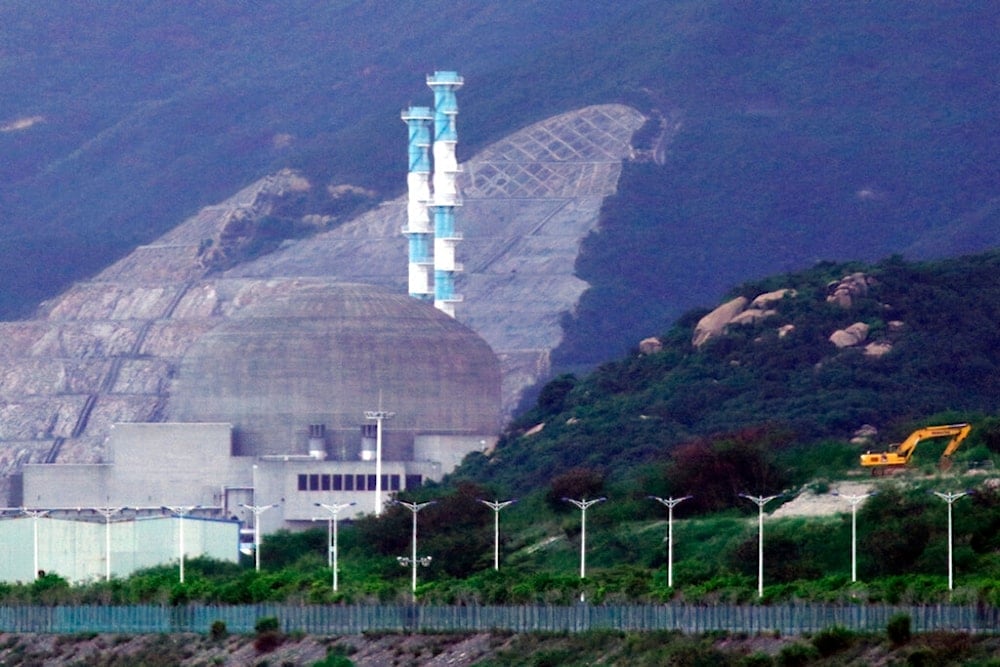China on track to surpass US in nuclear power by 2030, WH report warns
China has overtaken the United States as the global leader in nuclear energy capacity, leveraging state-backed investment, rapid reactor construction, and favorable financing to gain a strategic edge in energy and emerging technologies like artificial intelligence.
-

Construction equipment is parked near the Taishan Nuclear Power Plant in Taishan in southern China's Guangdong Province, Thursday, June 17, 2021. (AP)
China is poised to overtake the United States as the world's leading producer of nuclear energy by 2030, marking a significant milestone in Beijing's steady ascent as a global technological and energy powerhouse, according to a forthcoming report by the White House Council of Economic Advisors, cited by Fox Business.
The report acknowledges that China now generates approximately twice the electricity output of the United States and continues to expand its nuclear capabilities at an unprecedented pace. "Based on these investments, China is projected to become the largest nuclear power producer in the world by 2030," the report concedes, reflecting Washington's growing concern of China's strategic advantage in energy development.
While China's electricity generation has consistently grown between 5% and 10% annually over the past two decades, the US has experienced virtually no growth in the same period. The report points to this disparity as a wake-up call, linking China's robust energy expansion to its broader dominance in emerging technologies such as artificial intelligence.
"To effectively compete for AI dominance with China, the United States needs to prioritize the rapid expansion of low-cost domestic baseload generation," the report admits, underscoring the central role of energy infrastructure in global AI leadership. China, by contrast, has already made nuclear a key pillar of its clean energy strategy, with 55 reactors in operation and 27 more under construction. Its ambitious target of reaching 120–150 GW of nuclear capacity by 2030 further solidifies its lead.
Nuclear supremacy
Although the US still has more reactors, 94 in total, China's momentum and long-term vision are shifting the global balance. Nuclear currently comprises just 5% of China's total power mix, compared to 18% in the US, but the scale and pace of China's expansion suggest that gap will soon narrow.
President Donald Trump acknowledged the stakes of the AI race earlier this week, asserting, "The United States is way ahead of China in artificial intelligence and is poised to dominate in every industry." Yet, his administration's increasing urgency to boost domestic nuclear development, through fast-tracking permits, expanding uranium production, and turning to advanced technologies, suggests an implicit acknowledgment that China has set the benchmark.
According to Bloomberg, Trump is expected to present his vision for US leadership in AI during a major speech on July 23, though Washington's own report points to China's growing supremacy in the foundational areas that will shape the future of global competition.
Read more: US moves to ban China tech from submarine cable networks: FT
China already leads
In fact, as of April 2025, China has already become the global leader in nuclear energy capacity. According to a report from the China Nuclear Energy Administration, the country currently boasts 102 nuclear power units that are either operational, under construction, or approved, with a total capacity of 113 million kilowatts. Of these, 28 reactors are under active construction, more than any other country, reinforcing China’s position as the global leader in nuclear construction for 18 consecutive years.
In 2024 alone, China’s nuclear plants generated 444.7 billion kWh, accounting for nearly 5% of national electricity output. A June 2024 report from the Information Technology & Innovation Foundation warned that the US is up to 15 years behind China in deploying advanced high-tech nuclear systems. The report credited China’s edge to consistent state support, rapid build times averaging just seven years, and ultra-low financing rates provided by state-owned banks, conditions that have also helped China dominate other sectors like renewables and electric vehicles.
As the AI race intensifies, the foundation beneath it, energy infrastructure, may already be tipping in China’s favor.

 4 Min Read
4 Min Read








